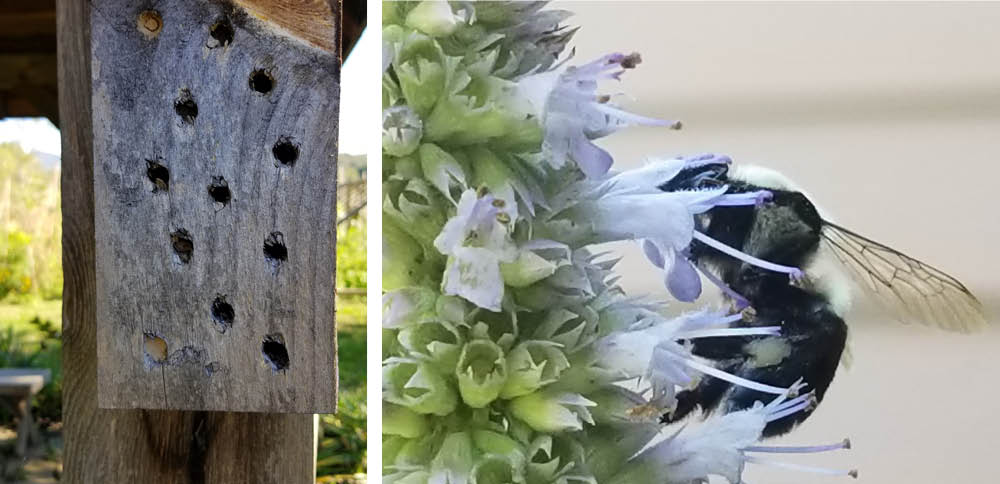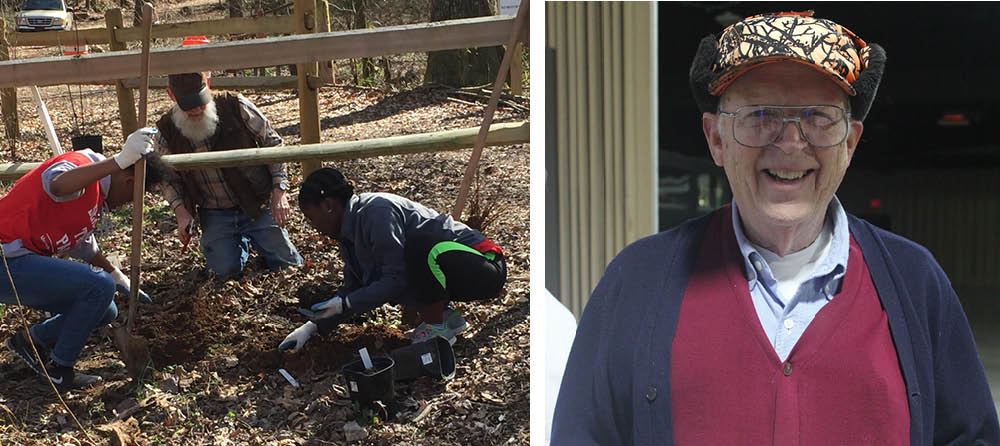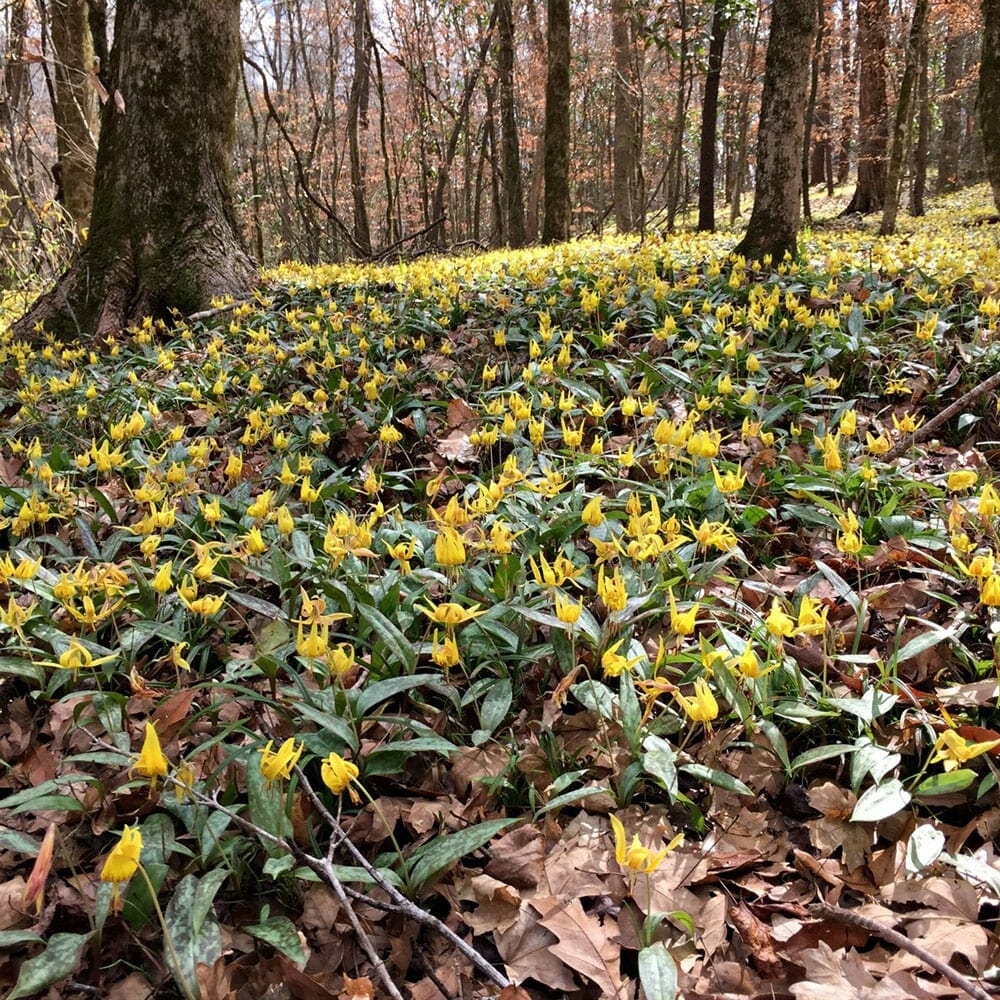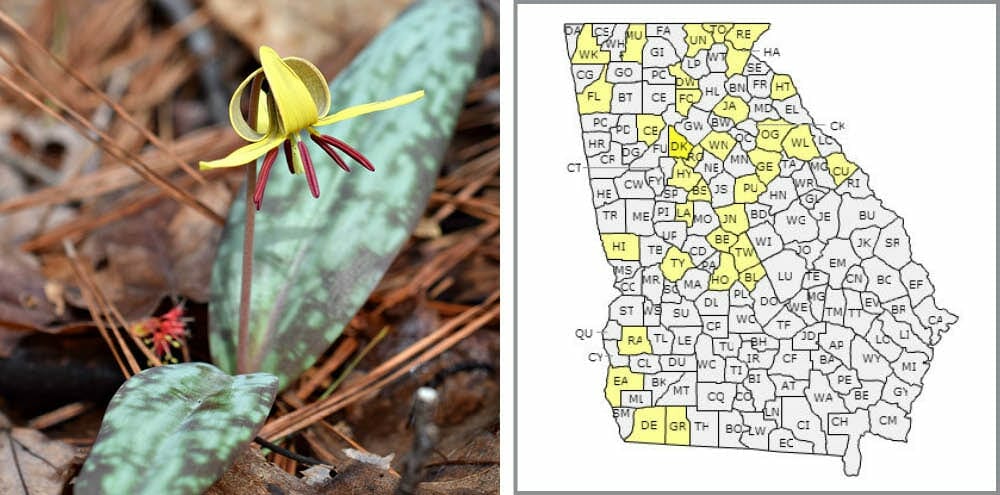Atlanta March Meeting
Learn about native bees and how to attract them to your landscape in a presentation by Becky Griffin, Community & School Garden Coordinator for the University of Georgia. There are over 500 native bee species In Georgia, and they are an important, and often overlooked, part of our ecosystem. At the March GNPS meeting, Becky will introduce gardeners to several of these native bees. Attendees will learn about the valuable ecoservices these bees provide, explore their nesting and forage habitat, and discover how to make a landscape bee-friendly. With the limited lifetime range of these bees, it is truly possible for thoughtful gardeners to make a real difference in insect conservation.
Becky works with Extension agents across the state helping to create successful gardens. As a Georgia certified beekeeper, Becky believes in emphasizing the ecosystem of the garden and frequently teaches workshops on beneficial entomology and integrated pest management.
The meeting will be on March 14 at Day Hall in the Atlanta Botanical Garden, and we hope to see you there! Social hour begins at 6:30 p.m., and the presentation begins at 7:00 p.m. Carpoolers may receive a parking voucher.

Pollinators like native bumblebees will nest in your yard with a simple homemade "bee hotel" like the one shown here.
Chapter News: West Georgia
Marc LaFountain and Frank Bennett

Left: Frank Bennett works with volunteers from the University of West Georgia at the Buffalo Creek Trail. Right: February speaker Ben DeMayo.
Current West Georgia Board member and metal sculptor Ben DeMayo’s life size buffalo sculpture, “Buffalo Bill”, has been installed in the field adjacent to the Meadow Entrance. Ben also presented “Non-flowering native plants along the Green Belt” for our chapter’s February 19th public meeting. Ben is a retired University of West Georgia physics professor who is currently researching nano-materials with a NASA grant. After a discussion of the difference between flowering and non-flowering plants in general, the focus of his presentation was the variety of native ferns that he has identified along the GreenBelt. He also noted the presence of Mariana maiden ferns (Macrothelypteris torresiana), which are non-native and known to spread aggressively.
As it has for the last several months, rain and cold weather have hampered our work on the Buffalo Creek Trail. We have, however, been successful in controlling a major source of erosion on one of the main paths leading to the creek. A Carroll County Public Works crew, using an excavator, removed improperly installed drain pipes and installed new ones. We have also made significant progress removing privet on the north side of the creek, facing the Meadow Entrance, and replacing it with native shrubs capable of retaining the stream banks. We were assisted on one of our workdays by a group of 10 volunteers from the University of West Georgia.
In addition to removing privet and honeysuckle and planting natives, we are preparing to replace old wooden steps leading to the azalea garden with stone steps. Several old foot bridges will also be replaced.
Plant Spotlight: Dimpled Trout Lily
Ellen Honeycutt

The Wolf Creek Trout Lily preserve was established in 2009 with GNPS support to save a poplulation of trout lilies (Erythronium umbilicatum) from development.
Dimpled trout lily (Erythronium umbilicatum) is one of two species of Erythronium found in Georgia. The speckled leaves of this species give rise to its common name; other species are sometimes referred to as fawn lily or dogtooth violet (so named because the tiny bulb resembles a dog’s tooth and the European species Erythronium dens-canis goes even further with that vein).
The dimple in our dimpled species refers to a small indentation in the top of the seed pod so it is most definitely identified after it blooms. The other species in Georgia is Erythronium americanum; it doesn’t have the dimple, and its range in the state is a little smaller. E. umbilicatum is a little more of interest to our state-wide membership because of its large range: from the northern-most counties all the way to the Florida line and even into Tallahassee, FL.
I first encountered dimpled trout lilies on a rescue in Cherokee County (a population that is not even represented on the range map shown below). These tiny members of the Liliaceae family love to grow in rich, sometimes rocky woods where their bulbs get bigger and grow deeper with age. The thick, rubbery leaves come up in early February, spearing their way through the dried leaves of the deciduous trees that shelter them. Single-leaved plants are too immature to bloom; it is the two-leaved plants that produce a single flower. The six bright yellow petals are strikingly offset by the purple anthers, especially as the petals reflex back. Occasionally you might find flowers with brown or, even more rarely, with yellow anthers. It’s fun to see the differences in a large population.
One of the biggest populations of this species is found in Grady County in southwest Georgia. Wolf Creek Trout Lily Preserve was saved from development in 2009 thanks to the efforts and donations of many folks, including a gift from GNPS. I went to Wolf Creek to see the trout lilies last year and it was an incredible display.
Trout lilies are just one of Georgia’s beautiful spring ephemeral wildflowers, appearing during abundant spring sunshine and going dormant as the woodland canopy trees leaf out. Look for trout lilies, trilliums, bloodroot, mayapples, Virginia bluebells, and many more spring treasures throughout February, March, April, and May. You’ll be glad you took the time to catch them in bloom.
A nice place to see dimpled trout lilies is the Cochran Shoals area of Chattahoochee River National Recreation Area in Cobb County - but don’t wait much longer to go! Not sure how to pronounce that big name? Check out our profile page to find a phonetic spelling for this species.

Dimpled trout lily (Erythronium umbilicatum) and map showing its range in Georgia. Photos by Ellen Honeycutt, map courtesy of The Atlas of Georgia Plants.
Cullowhee Scholarshps
Scholarship applications are now being accepted to attend the 2018 Cullowhee Native Plant Conference, held on July 17-20, 2019. Scholarships are available in three categories (student, beginning professional, and K-12 educator) to individuals who can demonstrate an interest in native plants and their use in the landscape — through horticulture, botany, ecology, landscape architecture/design, education, or a related field. GNPS sponsors two of the scholarships, awarded by the scholarship committee to applicants from Georgia, so if you know a promising individual who meets these criteria, please encourage them to apply. Online applications are available at the conference website: http://nativeplantconference.wcu.edu and are due April 19.
The Cullowhee Conference provides an excellent laid-back, informal setting for undergraduate and graduate students to present research with two options available - poster session and/or a Lunch ‘n Learn 40-minute presentation. Applications will also be found at the conference website and are due May 25. Conference registration will open on or around April 1.
|